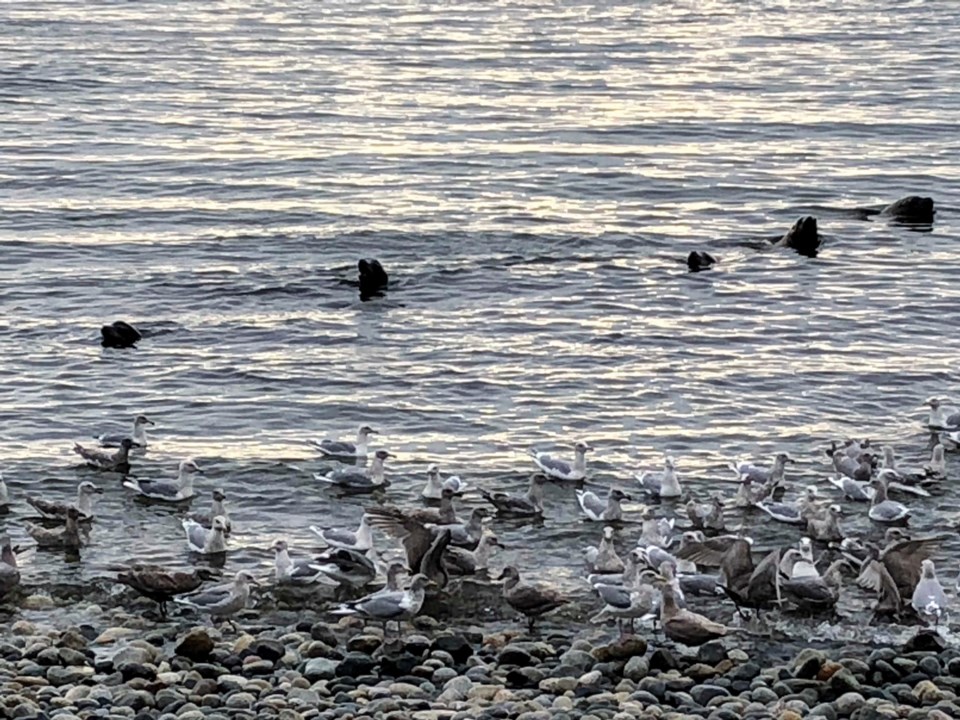What’s the buzz at the seashore?
Many of you may have noticed the barking sounds near our shores as of late. This is a typical sound of the California sea lion. Sea lions have been showing up in good numbers to feed on their favourite food, forage fish.
These small fish are “forage” or “prey” for hundreds of species. These super-abundant schooling fishes include Pacific sand lance, surf smelt, capelin, eulachon, herring, and anchovy in our waters. They and other forage fish species play an important role in the diets of humpback whales, porpoise, sea lions, seals, salmon, humans, and marine birds.
Anchovy have been documented on the Sunshine Coast in January, and this is most likely the prey the sea lions are pursuing. They swim back and forth parallel to the beach, coming in closer and closer to shore until their prey is easy to catch.
This in turn attracts seals, otters, gulls, and diving ducks, creating a frenzy of feeding activity along the shoreline.
In the months of February, March and April, herring are spawning here on the Coast, creating the next feeding frenzy for land, sea and air creatures alike. Herring, the most commonly known forage fish, will often choose seaweeds as the “anchor” for their eggs. Even when the egg-laden seaweed gets broken off and washed up on the beach, those eggs can survive until the next high tide.
Humans, always on the quest for a better garden, will often take advantage of the seaweeds washed in by winter storms, as easy pickings for garden mulch. By taking seaweeds for your garden during the spawning season, there is the potential to destroy thousands of herring eggs. Seaweeds should not be collected at this time.
If you must collect seaweed as mulch for your garden, take only small amounts, and over a large area to minimize the impact on this special area of our world, and not during the months of February, March and April.
For more information or to volunteer with Friends of Forage Fish, call Dianne Sanford, volunteer coordinator, 604-885-6283, or email [email protected]. For more about the group, see www.friendsofforagefish.com.
– Submitted



